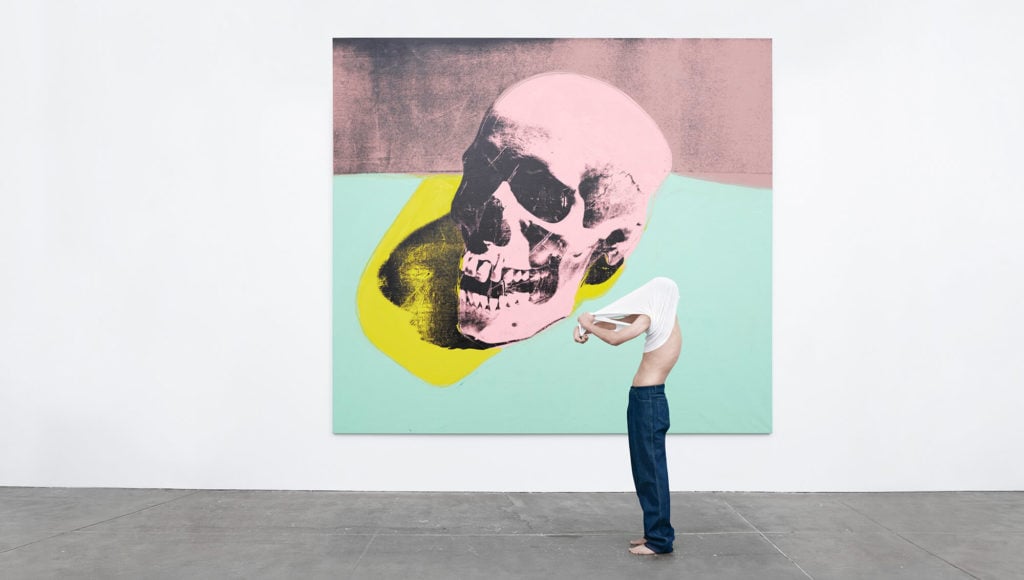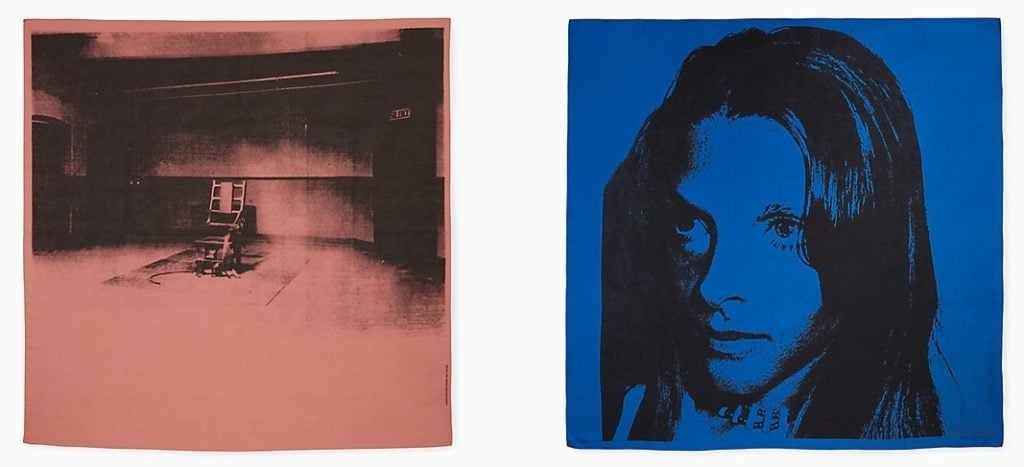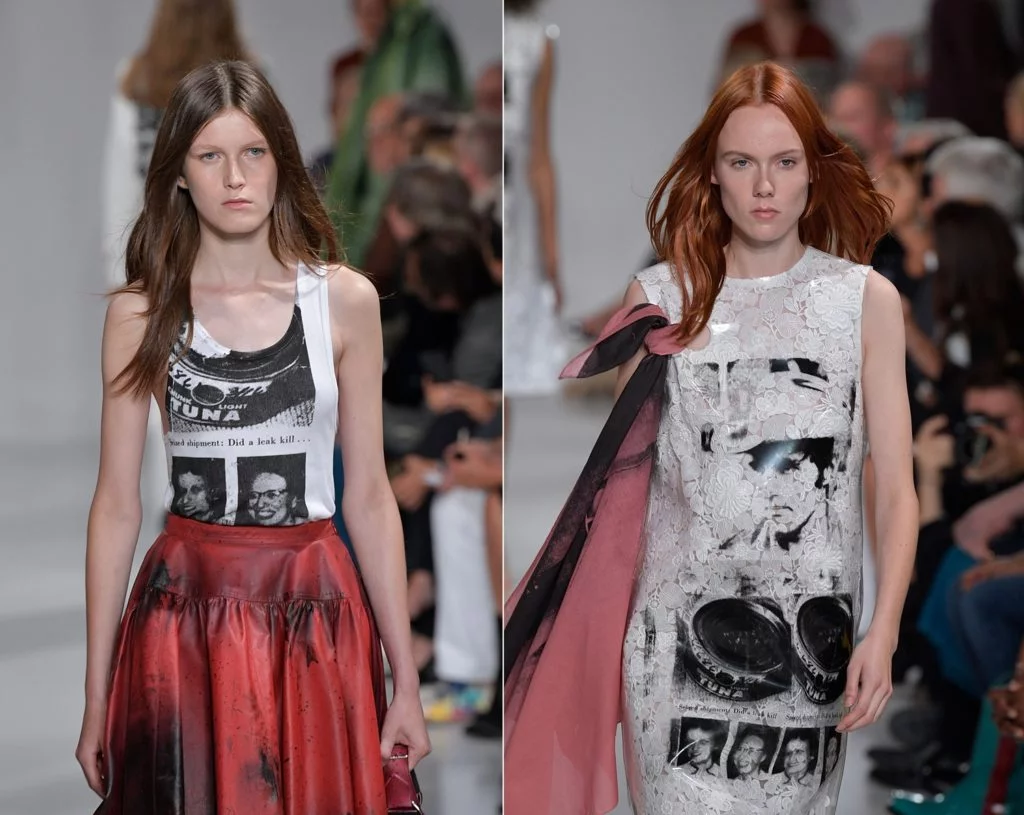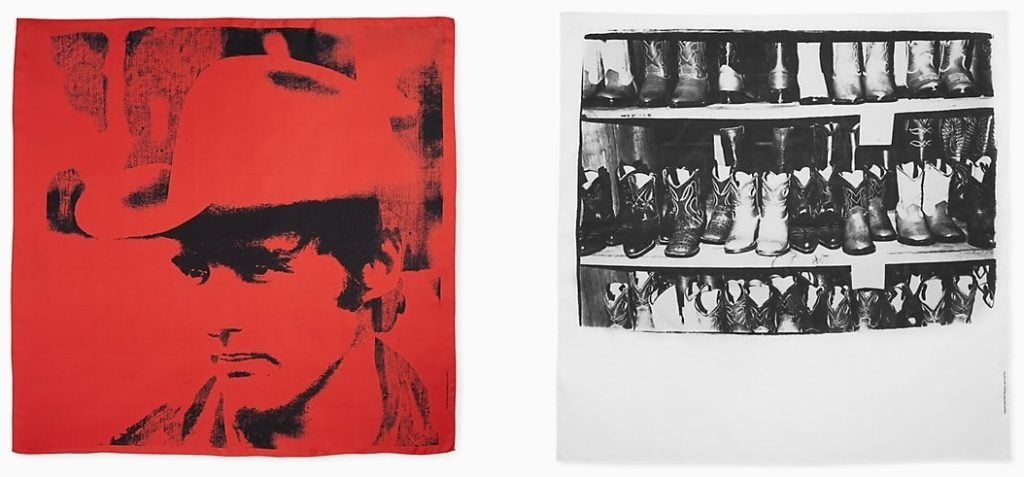Art World
How Calvin Klein and Raf Simons Got Unprecedented Access to Andy Warhol’s Archive
By plumbing the Pop artist's lesser-known works, Raf Simons hopes to create collaborations that reflect both America's beauty and its horror.

By plumbing the Pop artist's lesser-known works, Raf Simons hopes to create collaborations that reflect both America's beauty and its horror.

Max Berlinger

Once a novelty, art-fashion mashups have become so common today that they’re almost cliché. Perhaps that’s why Raf Simons, Calvin Klein’s chief creative officer, decided to take a different approach to the label’s latest partnership. Rather than roll out yet another one-off collaboration, he chose instead to pursue a more sophisticated, longer-lasting project. Now, the American fashion house is teaming up with the Andy Warhol Foundation for a multi-year partnership that will give Simons and Calvin Klein unprecedented access to the Pop artist’s archives.
That sort of access is new for an industry that has often leaned on lower-hanging fruits. In the age of Instagram, bold-faced projects with household names often get the lion’s share of the buzz, but Simons is out to change that.
The designer is an art lover and collector—he has a Picasso and a Cindy Sherman in his personal trove—and the way he deploys artworks in his collaborations reflects a deep respect for the artist. He eschews the use of familiar imagery to merely quicken the pulse and loosen the purse strings. Witness his spring 2018 collection shown earlier this year: Simons tapped Warhol’s “Death and Disaster” series, featuring tank tops and dresses with screen-printed images of car crashes and electric chairs. (According to Sotheby’s, the “Death and Disaster” series started when Henry Geldzahler, a curator and friend to Warhol, suggested the artist go deeper after creating his now iconic Campbell’s Soup Cans.)

Andy Warhol’s Big Electric Chair bandana in mauve and Sandra Brant bandana in nautical blue. Image courtesy of Calvin Klein.
These dense and disarming pictures, which were used with the blessing of the Warhol Foundation, conjure a queasy, chilling energy—a move away from the brand’s signature sensuality into something headier. It’s not hard to imagine the designer, who is Belgian, wrestling with the legacy of an American brand at a particularly vexing time in the country’s history. Layered into the collection are references to cowboys and the great Western frontier, but it’s in his more ominous allusions—some critics saw hints of Hitchcock and American Psycho—that his collection gets its grit. When asked to comment on the collection for Vogue, his answer was gnomic: “American horror, American dreams.”
This is not the first time Simons has incorporated the Pop artist’s work into his own. Some of Warhol’s lesser-known early drawings—sweet and simple flowers or women’s faces portrayed with a slight Deco sensibility—appeared in his fall 2013 collection for Christian Dior. Again, Simons avoided the popular highlights of the artist’s oeuvre in favor of more thought-provoking and unfamiliar fare.

Calvin Klein Collection 2018. Photo by Slaven Vlasic/Getty Images.
Perhaps that’s where the integrity behind Calvin Klein’s relationship with the Warhol Foundation comes from: Simons is willing to shrug off the constraints of fashion’s seasonal system—the mandate to constantly create, on a rigid schedule, then drop the idea and move on to the next season—in favor of exploring the nuances of an artist’s body of work, over time. He is looking to mine Warhol’s body of work for exciting nuggets that could create captivating fashion but also, hopefully, speak to something more than just a shiny new collection of coats and skirts.
“I’ve come to realize that Warhol’s genius goes much deeper than cheerful Campbell’s Soup paintings,” Simons said in a press release about the collaboration. “He captured all sides of the American experience, including sometimes its darker sides. Warhol’s art tells more truths about this country than you can find almost anywhere else.”
The Warhol Foundation echoed that sentiment. “Warhol’s legacy is not limited to the tremendous influence of his timeless concepts but also through the work of the foundation he established, which has become one of the pre-eminent funders of contemporary art having distributed over $275 million in grants since inception,” said Michael Dayton Hermann, the Warhol Foundation’s director of licensing. “We are proud that Raf’s visionary work at Calvin Klein will unabashedly embrace all facets of Warhol’s work and generously contribute to the foundation’s endowment.”

Andy Warhol’s Dennis Hopper bandana in red and Cowboy Boots bandana in white. Courtesy of Calvin Klein.
The Warhol partnership is a savvy choice, partly because of the late artist’s genuine interest in the intersection of art and commerce. That is helpful for Simons who, at the end of the day, is working in a business. So it feels authentic for the designer to release, say, a line of handkerchiefs printed with Warhol’s images—of Dennis Hopper or Sandra Brant, of an electric chair or cowboy boots—that invoke both America’s beauty and its horror.
In just one year, Simons has already injected a bit of excitement into Calvin Klein, a sense of Americana refracted through his own sensibility. Surprisingly, it’s his foreigner’s point of view that may help us see Warhol—and Warhol’s America—with fresh eyes.